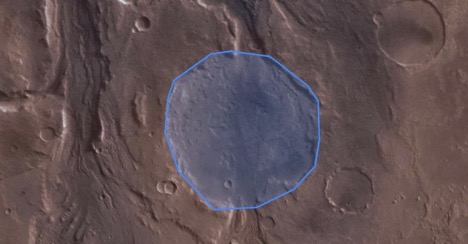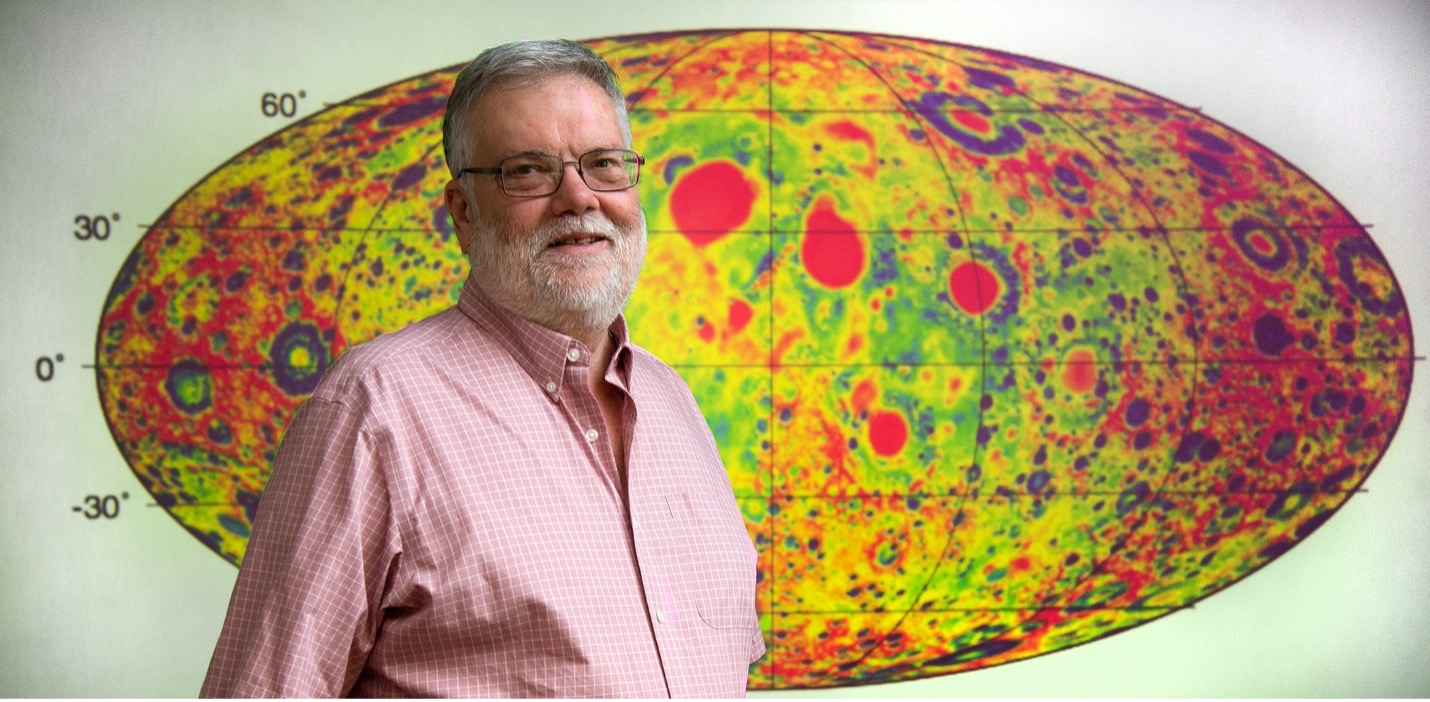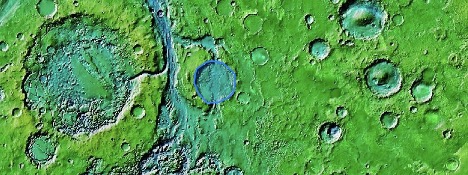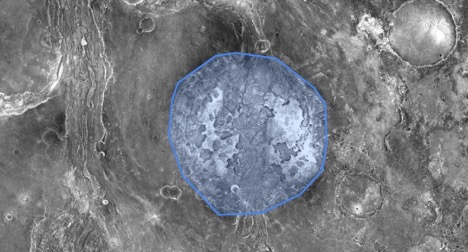A legacy etched in the red planet: Mars crater named for planetary expert Jay Melosh
12-19-2024

A crater on Mars has been named after Jay Melosh (1947-2020), Purdue University professor. (Visible color image courtesy of the U.S. Geological Survey)
A leading world expert in impact crater physics, Jay Melosh, has permanently left his mark on Mars, the red planet. According to the U.S. Geological Survey’s Gazetteer of Planetary Nomenclature website, a crater on Mars has been named “Melosh.” Jay Melosh, a distinguished professor with Purdue’s Department of Earth, Atmospheric, and Planetary Sciences (EAPS) and professor with the Department of Physics and Astronomy, was known for his work on impact cratering, planetary tectonics and the physics of earthquakes and landslides.
Melosh was also a key member of the Gravity Recovery and Interior Laboratory (GRAIL) mission that first mapped the gravity field of the moon. One of many of Melosh’s accomplishments led to a groundbreaking study on mass concentrations, or mascons, of material revealed by GRAIL beneath the lunar surface. The research revealed that mascons were formed by enormous asteroid impacts billions of years ago. Melosh explained how these collisions altered the moon’s surface density and gravitational field. Along with GRAIL, Melosh was also on the Deep Impact mission that slammed an impactor into a comet to peek under the surface.

He was instrumental in building planetary science within Purdue University’s College of Science. Melosh passed away in 2020, leaving an everlasting legacy at Purdue and with many colleagues. You can read more about Melosh’s legacy at Nature.com.
“Jay was a wonderful mentor to so many of us. We all have fond memories of Jay and miss him dearly,” Professor Briony Horgan said.
Professor Brandon Johnson said, “This large, nearly 100-km crater is a rather fitting honor since Jay, quite literally, wrote the book on impact cratering. He would have been pleased to see the other surface processes at work within this crater, too. Jay Melosh was my PhD advisor and also a close colleague and friend.”

Planetary feature names are approved by the International Astronomical Union. Tenielle Gaither, database manager for the U.S. Geological Survey’s Gazetteer of Planetary Nomenclature, received a request to name several features on Mars, specifically in an area of an ongoing mapping investigation of the Aram Chaos region.
“The IAU Mars Task Group chair and I selected Melosh from our Mars name bank to propose to the IAU. The names were approved in October,” Gaither said.
More information on how extraterrestrial features are named can be found on the Gazetteer of Planetary Nomenclature homepage.
“The crater is located near Aram Chaos in the equatorial region of Mars,” Horgan said. “Based on a quick look at the orbital data, this crater has had a complex history! It looks like it was filled in with lava, then ripped in half by giant outburst floods of water. Jay would have loved that interplay of planetary processes.”
He was selected as Purdue’s Herbert Newby McCoy Award winner in 2014. This is the most prestigious research honor in the natural sciences given by the university. Melosh was a member of the National Academy of Sciences.

“Jay Melosh was a visionary scientist whose contributions transformed our understanding of planetary science,” said Lucy Flesch, Frederick L. Hovde Dean of the College of Science. “He was deeply knowledgeable and had an ability to connect complex ideas in innovative ways. Naming a crater on Mars in his honor is a fitting tribute to his enduring legacy, both at Purdue and in the global scientific community.”
About the Department of Earth, Atmospheric, and Planetary Sciences at Purdue University
The Department of Earth, Atmospheric, and Planetary Sciences (EAPS) combines four of Purdue’s most interdisciplinary programs: Geology and Geophysics, Environmental Sciences, Atmospheric Sciences, and Planetary Sciences. EAPS conducts world-class research; educates undergraduate and graduate students; and provides our college, university, state and country with the information necessary to understand the world and universe around us. Our research is globally recognized; our students are highly valued by graduate schools and employers; and our alumni continue to make significant contributions in academia, industry, and federal and state government.
About the Department of Physics and Astronomy at Purdue University
Purdue Department of Physics and Astronomy has a rich and long history dating back to 1904. Our faculty and students are exploring nature at all length scales, from the subatomic to the macroscopic and everything in between. With an excellent and diverse community of faculty, postdocs, and students who are pushing new scientific frontiers, we offer a dynamic learning environment, an inclusive research community, and an engaging network of scholars.
Physics and Astronomy is one of the seven departments within the Purdue University College of Science. World-class research is performed in astrophysics, atomic and molecular optics, accelerator mass spectrometry, biophysics, condensed matter physics, quantum information science, particle and nuclear physics. Our state-of-the-art facilities are in the Physics Building, but our researchers also engage in interdisciplinary work at Discovery Park District at Purdue, particularly the Birck Nanotechnology Center and the Bindley Bioscience Center. We also participate in global research including at the Large Hadron Collider at CERN, many national laboratories (such as Argonne National Laboratory, Brookhaven National Laboratory, Fermilab, Oak Ridge National Laboratory, the Stanford Linear Accelerator, etc.), the James Webb Space Telescope, and several observatories around the world.
Writer: David Siple, Communications Specialist for the Earth, Atmospheric, and Planetary Sciences Department at Purdue University